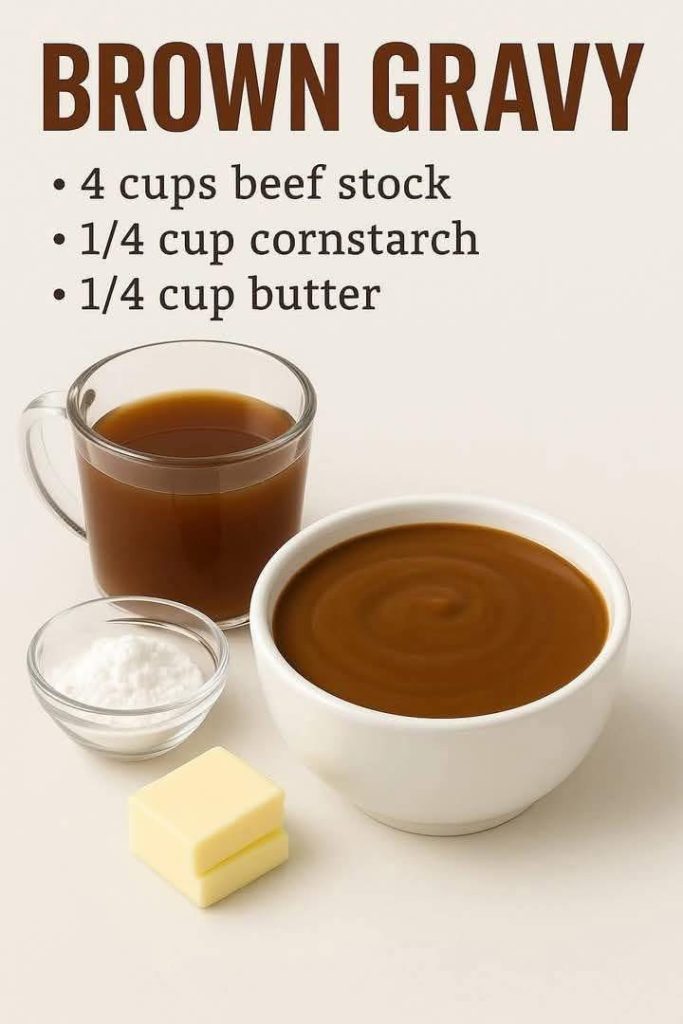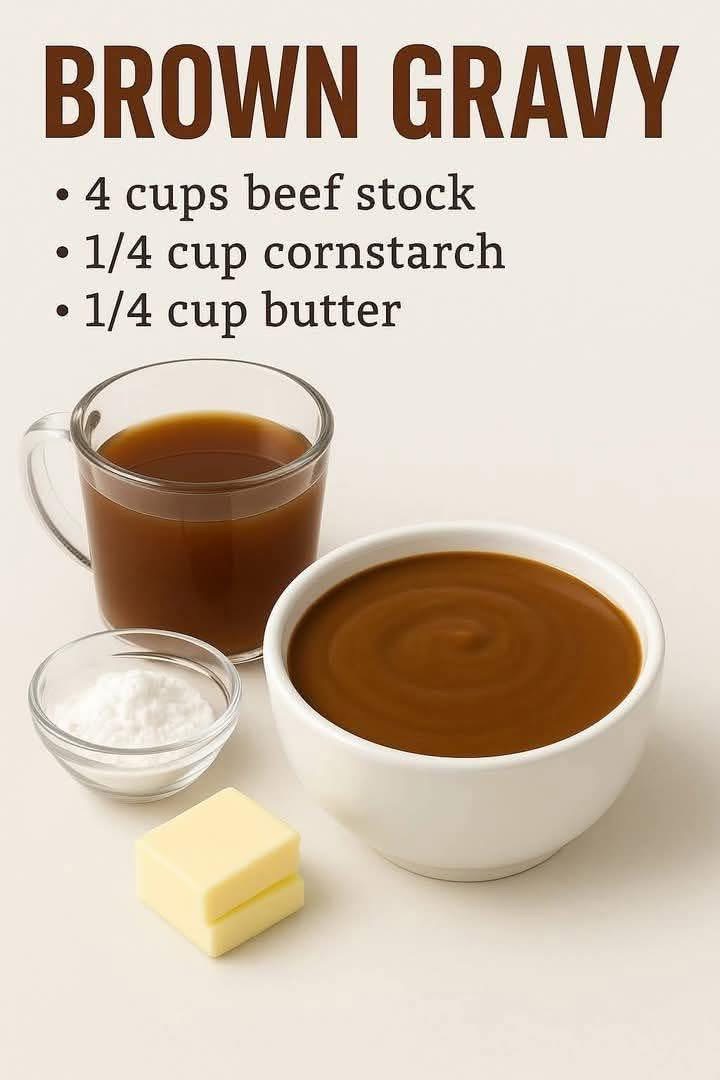
Introduction
Brown gravy is a rich, velvety sauce that has long been a favorite in American, British, and European cuisines. This classic sauce has roots in traditional cooking, where meat drippings and rich stocks were lovingly transformed into silky gravies that added depth and comfort to hearty meals. Brown gravy is a culinary staple in everything from roasted meats and mashed potatoes to classic comfort foods like meatloaf and biscuits.
Today, brown gravy is still a symbol of homey, satisfying meals, bringing warmth and flavor to the table. Let’s explore this delicious recipe in depth, complete with a historical background, benefits, nutrition facts, and much more!
Ingredients
Here’s everything you need to make this brown gravy:
✅ 4 cups beef stock
✅ 1/4 cup cornstarch
✅ 1/4 cup butter
Instructions
1️⃣ In a saucepan, melt the butter over medium heat.
2️⃣ In a small bowl, whisk together the cornstarch and a bit of the beef stock until smooth. This forms a slurry that will prevent lumps.
3️⃣ Once the butter is melted, slowly whisk in the cornstarch slurry. Stir continuously for about 2 minutes, ensuring it’s smooth and slightly thickened.
4️⃣ Gradually pour in the remaining beef stock, whisking constantly to avoid lumps.
5️⃣ Bring to a gentle boil, then reduce the heat to low and simmer for 5-10 minutes until thickened to your liking.
6️⃣ Season with salt and black pepper to taste.
7️⃣ Pour over your favorite meats or side dishes and enjoy!
Methods
There are a few different methods for preparing brown gravy:
🌟 Classic Pan Gravy: Uses meat drippings from roasts or pan-fried meat. The fond (browned bits) are deglazed with broth and thickened with a roux (butter and flour).
🌟 Cornstarch Method (as in this recipe): Uses cornstarch as the thickener, creating a glossy, lump-free sauce.
🌟 Gravy from Roux: Combines butter and flour to create a smooth paste (roux), which is then whisked with stock for a silky, traditional texture.
History
Brown gravy’s origins can be traced back to medieval European kitchens, where cooks would create savory sauces from meat drippings to make the most of every scrap. As culinary traditions evolved, gravy became a beloved part of Sunday roasts and festive feasts. In American cuisine, it’s an essential part of Thanksgiving dinners, soul food, and comforting family suppers.
Benefits
Brown gravy doesn’t just taste amazing—it has some surprising benefits:
✅ Adds moisture: Helps keep dishes like roasts and mashed potatoes tender and delicious.
✅ Enhances flavor: The umami-rich beef stock and butter provide deep, satisfying flavor.
✅ Versatile: Can be customized with herbs, spices, or even a splash of wine to suit different tastes.
✅ Comfort food magic: The creamy texture and rich taste bring warmth and comfort to meals.
Formation & Variations
Brown gravy can be adapted and formed in many ways to suit personal preferences and culinary traditions:
🍷 Red Wine Gravy: Add a splash of red wine during simmering for extra richness.
🌿 Herb-infused: Add thyme, rosemary, or bay leaf for a herbal twist.
🍄 Mushroom Gravy: Sauté mushrooms and add them for an earthy, umami-packed sauce.
🥩 Pan Drippings Gravy: Use pan drippings from roasted meats for even deeper flavor.
Nutrition
Here’s a rough estimate of the nutrition facts for a 1/4 cup (60 ml) serving:
- Calories: ~70-90 kcal
- Protein: ~1 g
- Fat: ~5-7 g
- Carbs: ~5-6 g
- Fiber: 0 g
- Sodium: ~300-400 mg (depending on stock used)
Conclusion
Brown gravy is more than just a sauce—it’s a flavorful journey through culinary history, adding richness and depth to meals. From its humble medieval origins to its place on modern tables, it’s a sauce that brings people together over comforting plates of food.
Lovers of Brown Gravy
People who love brown gravy appreciate not only the taste but the sense of tradition and comfort it brings. Whether you’re spooning it over mashed potatoes, pouring it on juicy roast beef, or dipping a warm biscuit, brown gravy is a reminder of hearty, satisfying meals shared with family and friends.
If you’d like, I can also help you customize the recipe with flavor variations, pairings, or alternative thickening methods. Let me know if you’d like me to expand on any of these aspects, like pairing it with a full dinner menu or adding interesting flavor twists! 🍽️✨
